Funny Looking Animals Funny Looking Babies
20+ Weird And Wild Looking Animals Plus Fun Facts!
A small-scale commission may exist earned on whatever purchases made via links on this page. Read our full affiliate disclosure.
Weird and wild looking animals are all effectually us – simply most of them you volition never see in person.
I wanted to bring them to you lot.
Non merely are many of them strange looking – some have pretty odd capabilities to aid them survive in nature.
I am going to try to continue adding to this post then that it is the best resource out there for the most funny looking and wild animals out in that location!
If you have a proffer just leave a annotate and let me know!
If yous have kids who really enjoy this kind of affair, they tin can check out some online animal classes – one of which is about weird animals!
These interesting animals come from everywhere, they may exist land animals or sea creatures or fly loftier in the sky.
Only they all have one thing in common, they are weird – only cool looking animals that will bring a smile to your confront.
I accept broken them down into categories so y'all tin can easily see the ones that most interest you lot.
I have as well included some fun facts as well to help you larn more about these interesting creatures that alive among us!
These Funny Looking Animals Are Not Pets!
Yes, they are absurd and unique – only that does non mean you should go out and buy one! These animals vest in the wild and if yous do find them for sale, information technology is probably illegal. Please enjoy these animals online or in conservation centers – and permit them remain free to roam their native environments! Thank you lot for caring.
Extinction Facts
Since this website is largely about helping animals – I wanted to brand sure I added extra value by noting if any of these animals are showing possibilities of going extinct.
If you are particularly fond of one of these amazing animals that are marked with an extinction risk – do a little inquiry on them and see how y'all can make a divergence and keep them from going extinct.
- Weird Looking Mammals
- California Leaf Nosed Bat
- Fossa (FOO-sah)
- Honduran White Bat
- Lowland Streaked Tenrec
- Malayan Tapir
- Pink Fairy Armadillo
- Saiga
- Star Nosed Mole
- Sunda Colugo
- Western Long Beaked Echidna
- Weird Looking Birds
- Vietnamese Dragon Chickens (Dong Tao Craven)
- Male monarch Vulture
- Shoebill
- Weird Looking Ocean Creatures
- Axolotl (Ax-oh-lot-ul)
- Blobfish
- Blueish Dragon (Glaucus)
- Weird Looking Insects
- Treehoppers
- Giant Weta
- Weird Looking Primates
- Coquerel Sifaka (shee-fa'-ka)
- Bald Uakari
- Tarsier
Weird Looking Mammals
California Leafage Nosed Bat
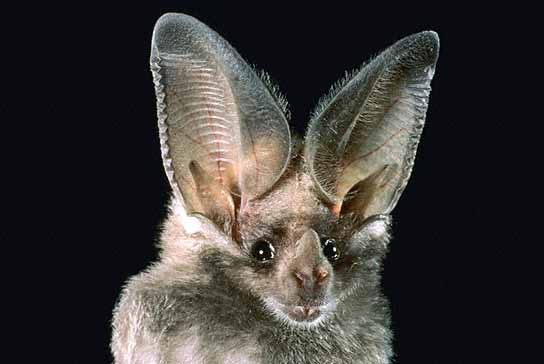
Extinction Risk: None
Definitely weird – but totally adorable, the ears on the California Leaf-nosed bat stole my heart.
It is the simply bat in North America that has these awesome ears and leaf looking growths on the olfactory organ.
Fun Facts
- Practise non migrate because their wings are too short and broad for long distance flying
- Loves living life in the caves and mines in the deserts of the US and Mexico
- Ears can measure out almost ane-1.5″ in length each
- Eats grasshoppers, beetles, moths and crickets
- Relies on echolocation to discover prey
Fossa (FOO-sah)
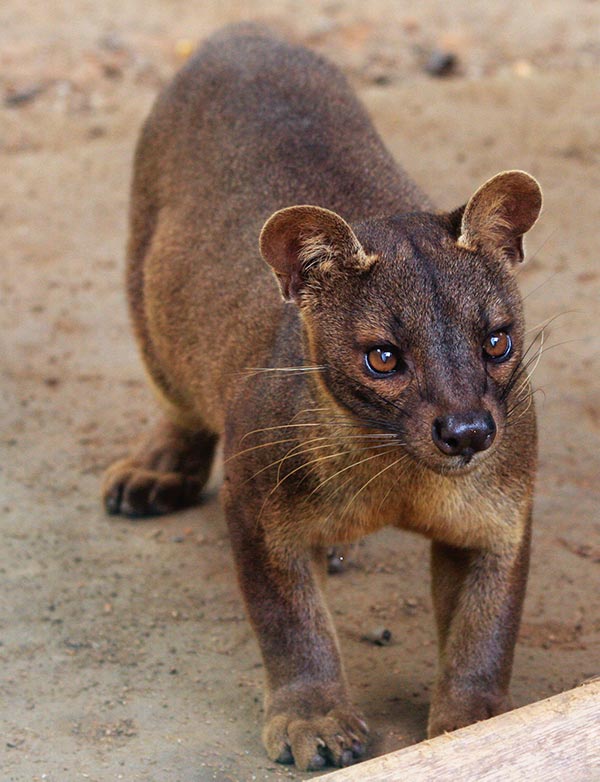
Extinction Risk: Endangered
You lot may be thinking – it kind of looks like a true cat, but it is not! The Fossa is in a category of their own but falls inside the mongoose and civet categories.
Fun Facts
- Tails are typically every bit long as its body
- Releases a stinky scent when frightened or agitated
- Establish in Madagascar – lives in tropical forests
- Threatened species
- Carnivore – large portion of diet comes from eating lemurs
- Average size is 72″ from nose to tail
- Can spring betwixt branches and trees
- Flexible ankles can plough almost backwards
- Hunts twenty-four hours or night
Honduran White Bat
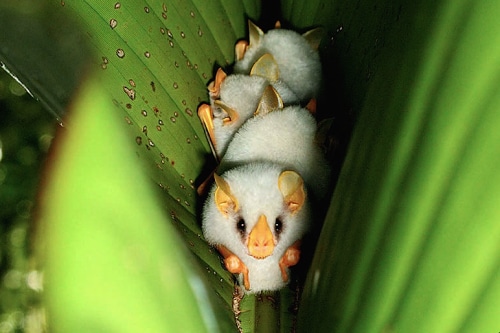
Extinction Risk: Near Threatened
Of all the bat species out in that location, the Honduran White Bat is 1 of the rare few that is all white. The yellow spike nose and leafage ears are the reason this creature makes the list.
Fun Facts
- Smaller species of bat measuring 1.5″-ii″
- Likes to roost in tent leaves
- Almost 4″ wingspan
- Weighs about 6 grams
- Timid and sweetness
- Tin can live up to twenty years
- Fruit eaters
Lowland Streaked Tenrec

You may be thinking – it kind of looks like a cat, but it is not! The Fossa is in a category of their own simply falls within the mongoose and civet categories.
Fun Facts
- Establish in Republic of madagascar rainforests
- Eats earthworms and various insects
- Makes crunching sounds when it sees a predator
- Long hairs on back rise and become potent when in danger
- Merely mammal to rub its body parts together to make sounds – called stridulation
- Tin bounce and thrust quills into an intruder
- Life span is simply upwardly to 3 years
- They just measure near 5-6 inches and length and weigh less than a pound
Malayan Tapir
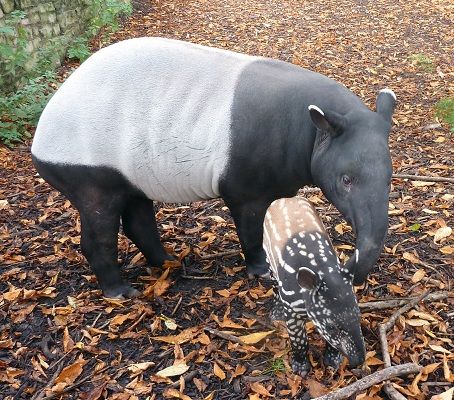
Extinction Gamble: Endangered
The coloring and unique nose brand this adorable cutie really a bit weird looking. They nearly look like an Orea cookie with their black dorsum and front end and white in the center.
Fun Facts
- Commonly mensurate most 6-8 feet in length
- Can abound up to 3.five anxiety alpine
- Females are larger than males
- Counterbalance from 575-700 pounds
- Vegetarians
- Their nose can be used as a snorkel
- Have poor eyesight
Pink Fairy Armadillo
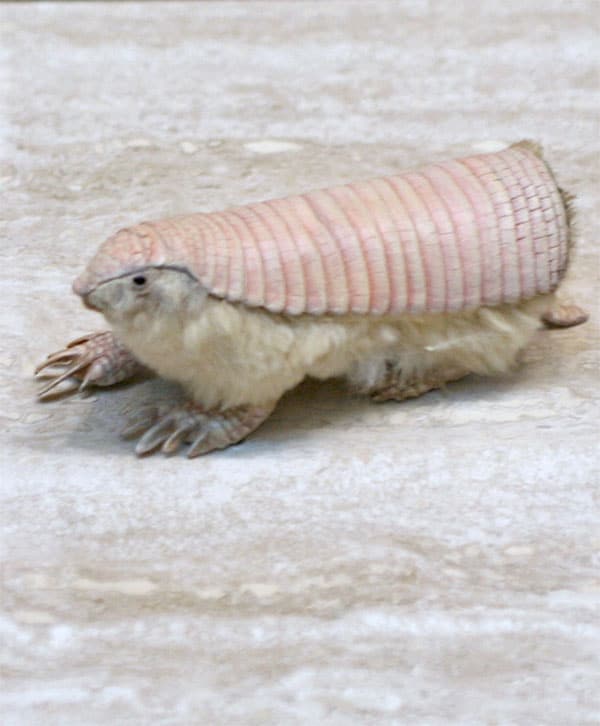
Extinction Risk: Unknown
Armadillos are cool animals as it is merely add in the cuteness of the Pink Fairy armadillo with its strange pink covering and furry body and yous have an extra layer of coolness.
Fun Facts
- Constitute in the plains, grasslands and dunes of Central Argentina
- Live up to x years
- Grow to 2.five-4.v inches
- Weighs nigh 4 ounces
- Rarely seen by humans so hard to written report
- Pink armor is actually blood vessels under its armor
- Can curlicue upward in a brawl to protect their abdomen
- Eat insects, worms and plants
- Silky yellow white fur
Saiga
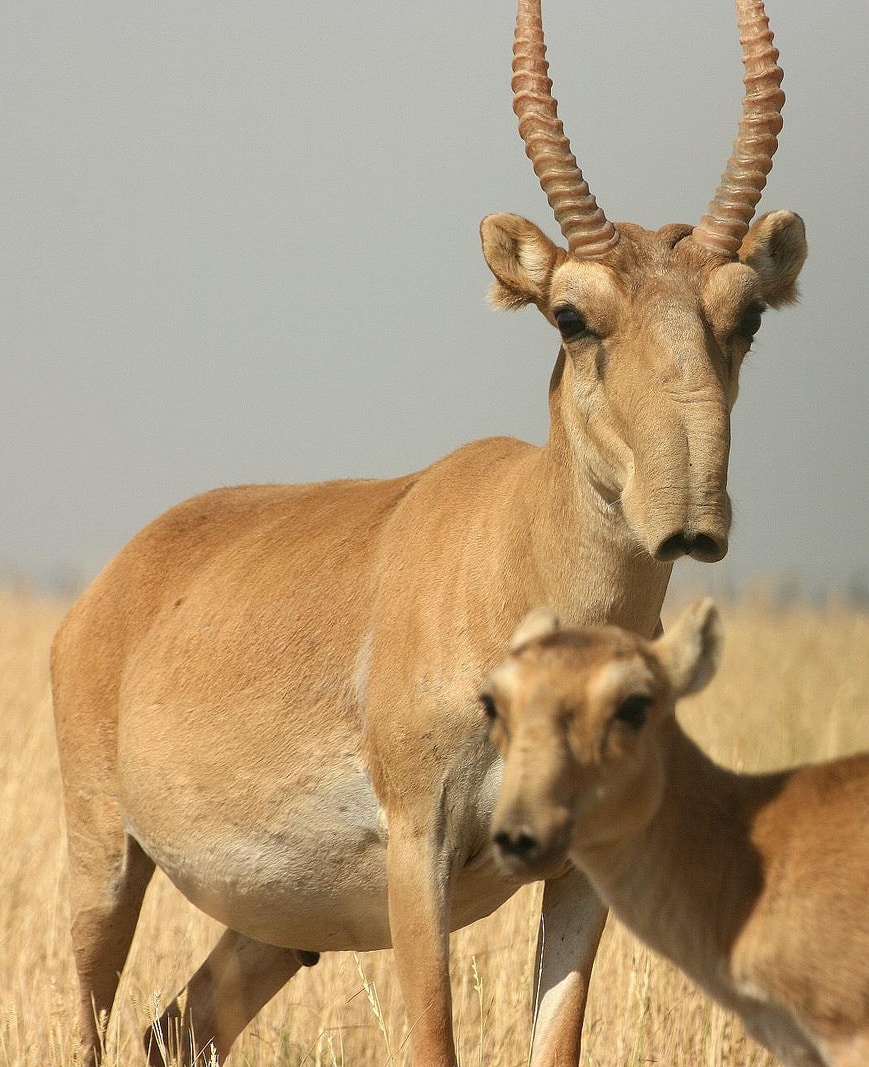
Extinction Risk: Critically Endangered
Part of the antelope family, the Saiga resides in the semi-desert grasslands of Central Asia. Their noses are what makes them a standout and why I added them to the listing. They were already declining in numbers when a major disease outbreak in 205 caused near 200,000 deaths making them critically endangered.
Fun Facts
- Reside mainly in Asia and southeastern parts of Europe
- Saiga are about the size of a goat having a height of just about i to 2.5 feet
- Weight varies from 30-110 pounds with females being much smaller in size
- Average life span is 10-12 years
- Newborn saiga can outrun humans at its second day of life
- The unique nose helps saiga warm and moisten common cold, dry air in the wintertime and filters sand and dust during the summer
- Herbivore
- Great sense of aroma
Star Nosed Mole
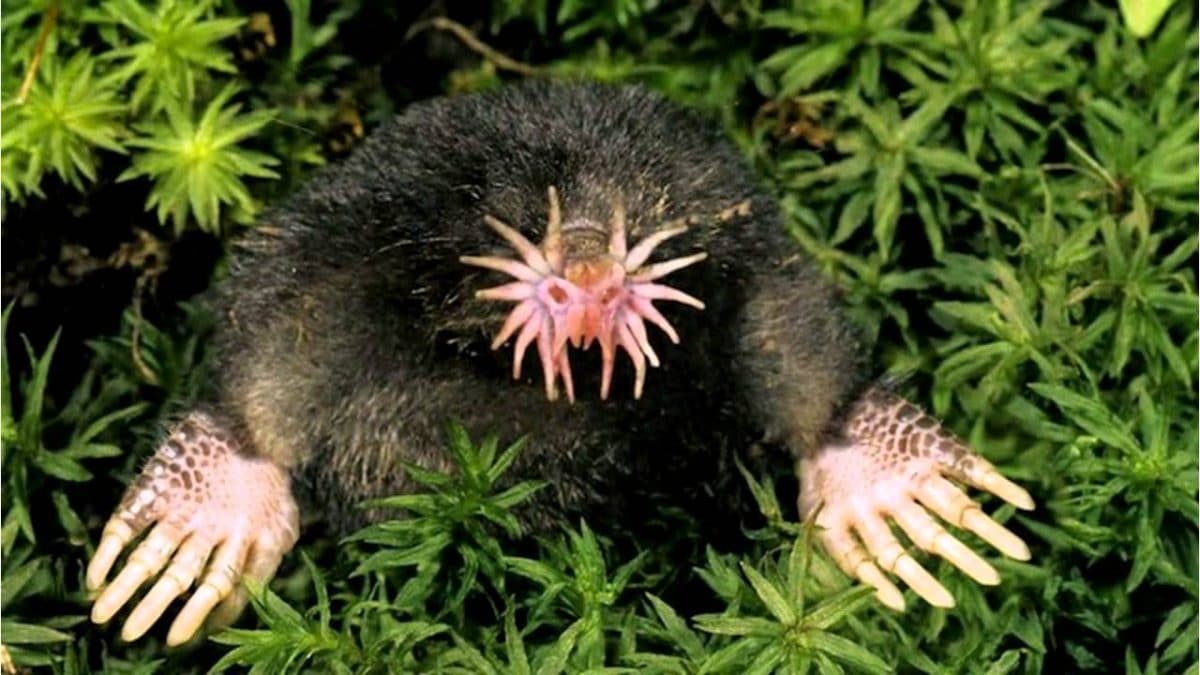
I am not certain whether to love this mole – or be repulsed by information technology! But I wanted unique animals and this is an brute that is definitely unique! Just not certain I would desire to see one in person.
Fun Facts
- It is known as the globe's fastest eater as it tin detect and consume an insect or work in just a quarter of a second
- Over 100,000 nerve fibers are nowadays on the star organ making it one of the almost sensitive touch organ on whatsoever mammal
- Lives in wetlands along the e cost of the Usa from Canada down to Georgia
- Life span is 2-3 years, most spent underground hunting for prey
- Tin can swim and odour underwater
- Mostly bullheaded
Sunda Colugo
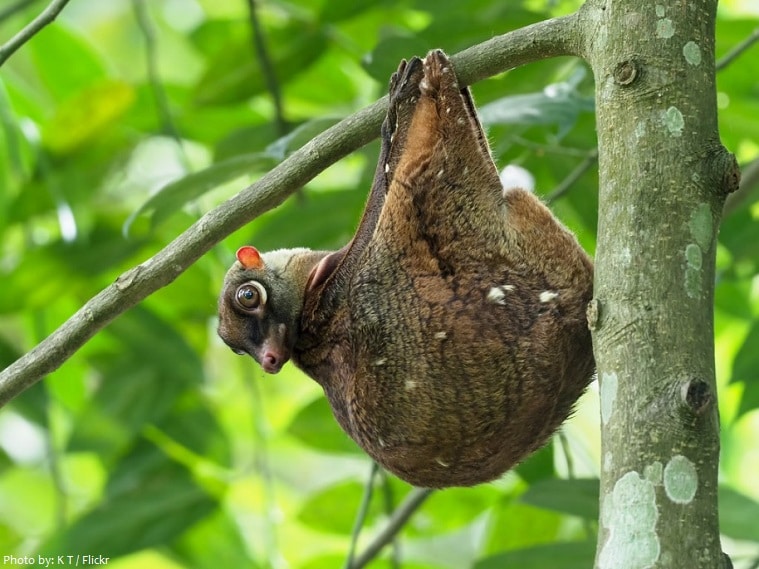
Extinction Risk: Endangered
Although chosen "flight lemurs" by some people, this animal is no lemur at all and does not really fly only glides. They have big eyes and a torso that is webbed that helps them glide and hang. Weird looking – but in a cute kind of way for sure!
Fun Facts
- Native to southeast Asia
- Dine on leaves and young shoots making them herbivores
- Many people think information technology flies, only it does not – it really glides
- Weights from two-iv pounds
- Their fur helps them cover-up themselves into the trees
- Webbed feet help them become a better grip when climbing
- The longest recorded glide of a Sunga Coluga was 446 anxiety
Western Long Beaked Echidna
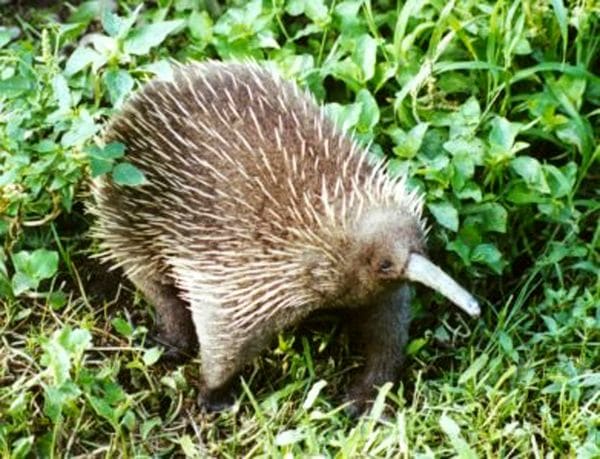
Extinction Take chances :Critically Endangered
Definitely an animal that looks similar a porcupine but is very dissimilar in and then many means.
Fun Facts
- Native to New Guinea
- The spines on their backs are actually hair follicles
- When they experience threatened they volition curlicue up into a brawl and radiate their spines to protect themselves
- Torso temperature is second lowest of all mammals
- Can live upwards to 45 years in the wild
- Eats earthworms
- Lays eggs – dissimilar most mammals
- Tin can weight up to 36 pounds
Weird Looking Birds
Vietnamese Dragon Chickens (Dong Tao Chicken)
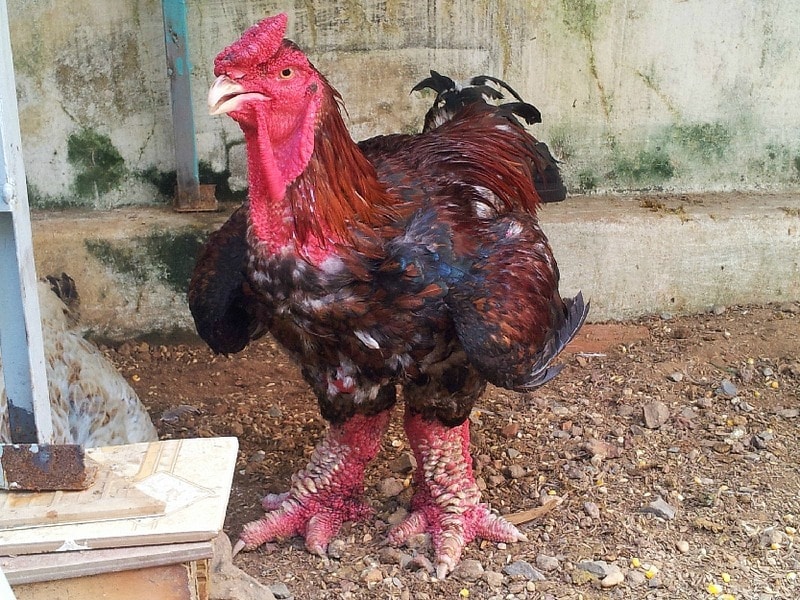
Definitely non the prettiest of chickens, but this breed is one of the most expensive in the world because their big thighs are seen as a true delicacy in Vietnam.
Fun Facts
- Used to be bred exclusively for the royal family
- Legs are covered with red bulbous scales that are incredibly thick
- Extremely sensitive to temperature
- Exercise not lay many eggs at one fourth dimension
- Legs actually brand the hatching procedure and so often farmers will get involved to help.
- Females are usually covered with white fathers and the males are more colorful
- Tin can price as much every bit $2,500
- Tin can weigh up to thirteen pounds
King Vulture
Extinction Risk: None
This spectacular weird looking bird, the King Vulture, is a stunning creature and considered to exist the largest New Globe vulture. With vibrant colors and a beak fabricated for tearing its pray you can come across why it fabricated it to our list.
Fun Facts
- Can soar for hours without flapping its wings
- Flies loftier over treetops
- Flies college than most other vulture species
- Abound to nigh ii.5 feet tall
- Weigh up to viii pounds
- Reside in dense forests that have a tropical lowland habitat
- Found in southern Mexico to Argentina
- Tin can live up of twenty years in the wild
Shoebill
Extinction Risk: Endangered
Some telephone call the Shoebill the about terrifying bird in the globe because of their prehistoric – and unsafe looking bill! But no worries, yous probably won't come beyond i whatever time soon.
Fun Facts
- Reside in the swamps of the tropics of eastern Africa
- Prey on various big fish like eels, catfish and yeah, sometimes savor a baby crocodile
- They poop on their own legs – this is a absurd affair nearly them that helps continue them cool
- Can live upwards to 35 years in the wild
- Stands nigh 4 anxiety alpine
- Weighs almost 12 pounds
- Currently decreasing in population
- Bill can be a foot long and has a sharp hook on the edge
- 8 foot wingspan
- Stay motionless for hours which helps them catch their casualty
Weird Looking Sea Creatures
Axolotl (Ax-oh-lot-ul)

Extinction Risk: Critically Endangered
Every fourth dimension I see 1 of these adorable creatures I swear it is grin at me! In the wild the Axolotl is typically black or brown and white ones are found in captivity. They are part of the salamander family.
Fun Facts
- White ones were descendants of a mutant male back in the 1800'due south. They were and then bred to exist white with black eyes.
- The growths from their heads expect similar feathers but are actually their gills
- Plant only in the lakes and canals of Xochimilco, Mexico
- Eats small fish and worms
- Earlier information technology was labeled endangered, it was a nutrient favorite – peculiarly in tamales
- They tin regenerate limbs, jaws, spines and fifty-fifty brains
Blobfish

Not only is this one of the weirdest animals, sadly it may exist one of the ugliest. Although their momma's probably don't retrieve so! Their sorry faces volition make you feel sorry for them and suck you lot in, so stare with caution.
Fun Facts
- Typically found 2,000-4,000 feet below the ocean'southward surface.
- They do non have os or muscle
- They rely on gelatinous mankind to keep them afloat
- They are pretty inactive and but open their mouths when something edible comes their way
- They similar crabs, mollusks and sea urchins
- There is little known almost them in terms of life bridge or reproduction
- It looks more similar real fish when underwater simply makes this more deplorable confront like await when out of the h2o due to the lack of musculus
Blueish Dragon (Glaucus)
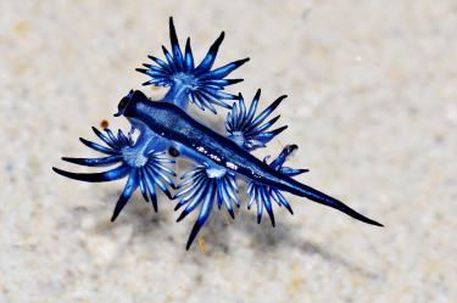
A mollusk that has an appearance that is hard to believe is real. They float on their back to utilise their bright blue bellies as cover-up from predators and are merely a stunning fauna!
Fun Facts
- Prefers to eat the Portugese man o'state of war
- Tin can take in the venomous tentacles of the human being o'state of war and store them and use them if they feel threatened
- It is a hermaphrodite pregnant information technology can produce both sperm and egg
- Can grow to be just over 1″ long
- Can swallow air and utilise ti to bladder on the water's surface
Weird Looking Insects
Treehoppers
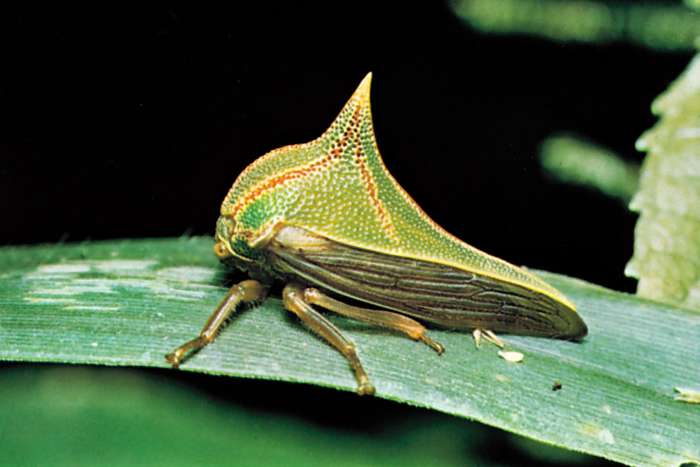
I am non a fan of bugs, this 1 caught my eye and I had to learn more than. Treehoppers are not but cool to look at but accept some really cool features that make them so unique.
Fun Facts
- The Treehopper has a helmet that is difficult and tough and can come in a variety of shapes, sizes and colors based on the species
- They are ordinarily under a half inch in size
- There are over 3,000 separate species of the treehopper – each with their own await that blends into their specific surround
- Enjoys the nutritious liquid that comes from plant stems
- Commonly establish in warmer parts of the earth
Giant Weta
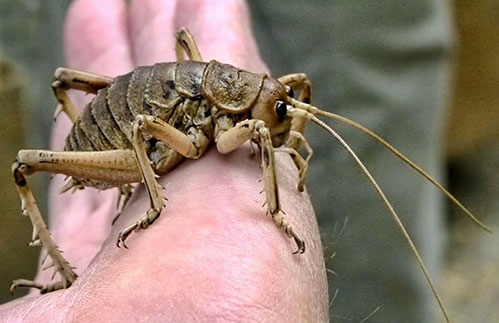
Extinction Chance: Endangered
Beingness a person who despises bugs – this creep crawly almost made me leap out of my chair! The size of this bug makes me want to stay out of New Zealand! It is considered one of the biggest insects on globe and has a prehistoric look that is just terrifying.
Fun Facts
- Can weigh upward to 2.5 ounces
- Carrots are a favorite snack
- Native to New Zealand
- Can be the size of a small gerbil
- Their ears are below their human knee joints
- Although it looks similar it should, information technology cannot spring
- Tracing of being go back to dinosaur days
- There are various species of giant Weta
Weird Looking Primates
Coquerel Sifaka (shee-fa'-ka)
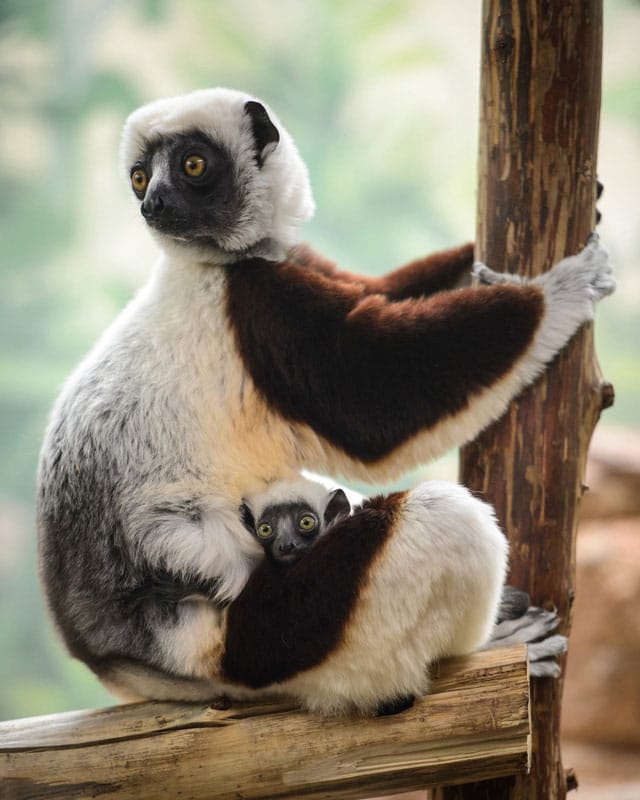
Extinction Adventure: Critically Endangered
I of the most beautiful weird animals on our listing with their stunning body markings and large bulgy eyes. Their eyes give them a trivial of that creepy factor I was looking for. These beauties are role of the lemur family.
Fun Facts
- Found in Madagascar
- Named after the sound it makes when it sees an enemy coming
- Mostly white with maroon patches
- Black face is furless except for the muzzle which unremarkably has a minor white tuft of fur
- Walking is more than of a dance on their hind legs – and they use arms outreached for rest
- Plant-eaters that adopt leaves
- Tin jump over 40 feet with their hind legs
- About eighteen″ long
- Tail is nigh the length of their body
- Counterbalance about 9 pounds
Baldheaded Uakari

Extinction Take chances: Vulnerable
Personally, I notice this primate to be a little scary – never mind weird! Their brilliant red – and bald face up gives them a creepy experience like something out of a thriller movie!
Fun Facts
- Native to the countries of Peru, Brazil and Columbia
- Eats fruits and leaves during flood seasons and seeds, nuts and roots in the dry flavour
- Rainforest habitat that tends to flood
- Lives in the copse to avoid the floods
- Weighs from iv to 7 pounds
- Can alive in the wild up to 20 years
- Grows to about 15-22″ in height
- Red color of the face is the claret period beneath their matter layer of skin
- Extremely short tail which is simply well-nigh 6″ in length
- Uses and arms and legs to travel between copse
- Ordinarily monogamous
Tarsier
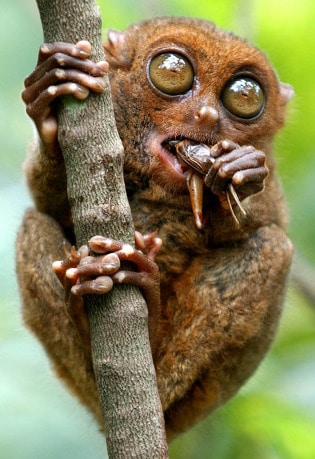
Extinction Risk: Endangered
This adorable petty primate that loves to jump from tree to tree is i of the smallest and nigh unique looking primates out in that location with their Yoda vibe.
Fun Facts
- Used to be found in Asia, Europe and North America but are now merely institute in the islands of Southeast Asia
- Huge eyes that each weigh as much as their brain
- Eyes are so big they can't move them in their head
- Heads tin can turn 180 degrees in either management – which helps since they cannot move only their eyes
- Gluey fingers are elongated for better power to grip and cling to surfaces
- The world's merely strictly carnivorous primate
- They are very song
- Smell glands on face, tum and genitals to help defend territories
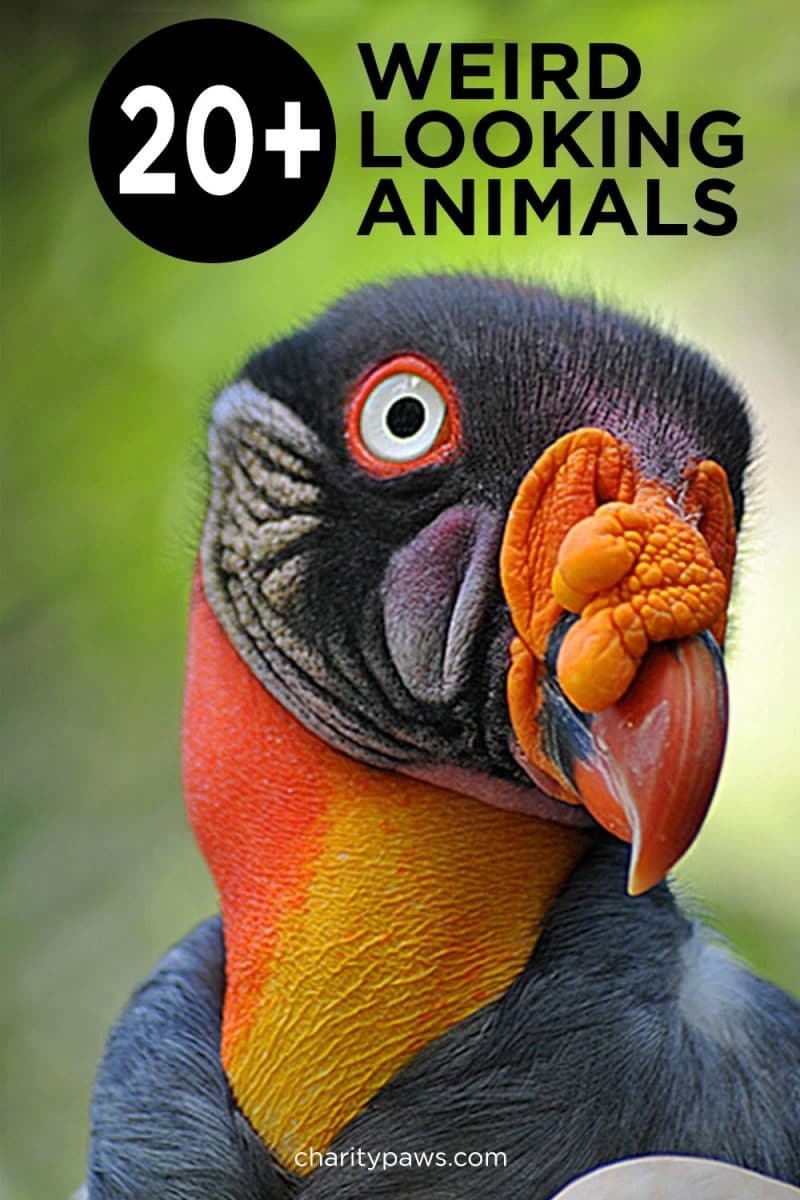
Resource: IUCN Red Listing used for verification of extinction status
Source: https://charitypaws.com/weird-looking-animals/

0 Response to "Funny Looking Animals Funny Looking Babies"
Post a Comment